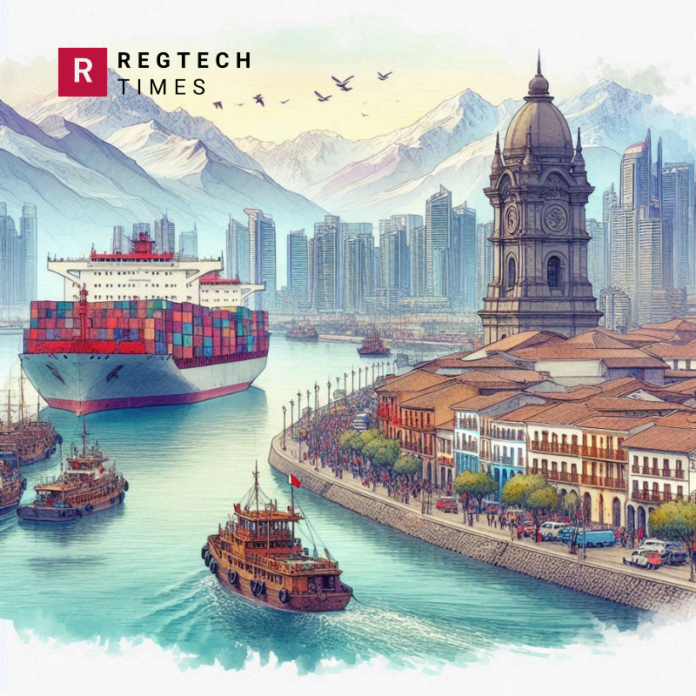Recently, a significant event highlighted growing tensions between China and the United States. China has entered the backyards of the USA through Cuba, Mexico and now Peru. This development revolves around Peru’s strategic engagement with China, especially concerning a Chancay port project that could have far-reaching implications. Here’s an in-depth look at the current situation, its background, and the potential consequences.
Peru’s Strategic Move with China
In a recent visit to Beijing, Peru’s President Dina Boluarte engaged in high-level meetings with Chinese leaders. The discussions centred on strengthening economic ties between Peru and China, marking a notable shift in regional dynamics. One of the key outcomes of this visit was the endorsement of a massive infrastructure project: the Port of Chancay.
Located approximately 50 miles north of Lima, the Chancay Port is a significant development, with 60% of its ownership held by China’s Cosco Shipping. This $3.6 billion port, set to open in November, will be the largest deepwater port in Peru. Its construction is financed by loans from Chinese banks, emphasizing China’s growing influence in Peru.
The port’s strategic location and capabilities are noteworthy. It is designed to accommodate larger ships and handle high-value exports like copper and zinc more efficiently. This development could revolutionize Peru’s trade, providing faster access to international markets and boosting the country’s economic potential. However, the implications extend beyond mere economic benefits.
China Expands Spy Base in Cuba; US Alarmed by Growing Espionage Challenge
U.S. Concerns and Potential Impact
The rise of China’s influence in Peru has raised alarms in the United States. There are rumors that the U.S. tried to prevent Chinese investment in the port. Some critics argue that U.S. efforts to promote certain policies, including tariffs and protectionist measures, may have inadvertently pushed Peru toward closer ties with China. This shift is seen as problematic for U.S. interests in the region.
Chinese Espionage: 19 Land Parcels Near US Military Bases Pose National Security Threat
The presence of Chinese firms like Huawei, BYD, and China Southern Power Grid in Peru underscores the expanding influence of Chinese capital. While these investments are intended to modernize Peru’s infrastructure and technology, they also come with potential risks. Critics argue that Peru’s reliance on Chinese investment might lead to increased vulnerability to Chinese geopolitical strategies and economic pressures.
Rebranding Tactics of Chinese Companies: Deceptively Camouflage as US Entities to Evade Sanctions
The Chancay Port, with its advanced facilities, has the potential to become more than just a commercial hub. Security analysts have raised concerns about its possible use for military purposes or as a logistics center for Chinese naval activities. Such a development could pose a strategic challenge to U.S. interests in the region, given the increasing military presence and influence of China globally.
Peru’s Economic Aspirations and Challenges
For Peru, the Chancay Port represents a significant opportunity to enhance its economic prospects. The port is expected to improve the efficiency of trade, reduce congestion at existing ports, and attract further investment. President Boluarte has emphasized that this project reaffirms Peru’s status as a reliable investment partner, aiming to improve the living conditions of its citizens.
EU Imposes 38% Tariffs on Chinese EVs: Balancing Industry Protection and Global Trade
However, there are challenges associated with this ambitious project. Peru’s history of corruption and economic instability poses risks. The country will need to ensure that the benefits of the port are maximized and not undermined by poor governance or over-reliance on a single foreign partner. The experience of other nations, such as Ecuador, which faced difficulties with Chinese investments, serves as a cautionary tale.
China Warns US over False Allegations of Spy Stations in Cuba; Terms Media Report Dirty Bomb
To achieve long-term success, Peru must balance its international relationships and seek diversified sources of investment. This approach requires transparency, stable institutions, and a commitment to sustainable development. The Chancay Port could be a crucial part of Peru’s economic transformation, but it should be seen as one piece of a broader strategy to ensure lasting prosperity.
In summary, China’s growing influence in Peru, highlighted by the Chancay Port project, signals a shift in regional dynamics that could impact U.S. interests. While the port offers significant economic benefits to Peru, it also raises concerns about the strategic implications of increased Chinese presence in the region.



